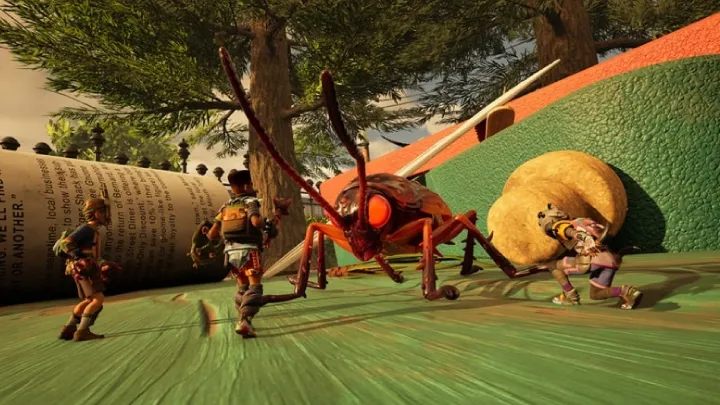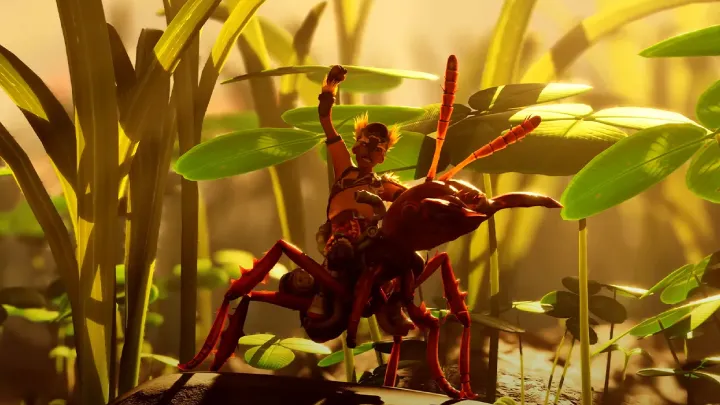Grounded 2 is the thrilling sequel to the original survival adventure developed by Obsidian Entertainment. The game brings players back to the backyard world where they are shrunken to the size of an insect and must survive in an environment full of giant bugs, dangerous plants, and environmental hazards. Building shelters, crafting weapons, exploring biomes, and fighting terrifying creatures are all essential parts of the experience. This guide will show you how to survive, build, and thrive in Grounded 2 through step by step tips and strategies for both beginners and experienced players.
Understanding the World of Grounded 2
Before you can survive in Grounded 2, you need to understand the world you are in and the challenges it brings.
The Setting and Concept
Grounded 2 takes place in a massive backyard world viewed from a tiny perspective. Everything around you, from blades of grass to ants, becomes huge and dangerous. The story follows the same core idea as the first game but expands on exploration, crafting systems, and new creatures.
Key Changes from the First Game
The sequel introduces new biomes, improved building mechanics, weather systems, and enhanced combat. There are also more dynamic creature behaviors that make the world feel more alive and unpredictable.
The Survival Objective
Your main goal is to survive, gather resources, build a safe base, and uncover the mystery behind your shrinking. Every day brings new threats, so preparation and adaptability are essential.
Starting Out and Choosing Your Character

When you first begin, making the right early choices can make survival much easier.
Character Selection
Grounded 2 offers multiple characters, each with unique voices and background stories, though gameplay advantages are equal. Pick one that fits your play style or personality.
Learning the Controls
Movement, jumping, blocking, and attacking are fundamental. Spend time in a safe area to understand how stamina and hunger affect your performance.
Early Priorities
Start by collecting basic materials like pebbles, plant fibers, and sap. These are essential for crafting your first tools and weapons. Avoid combat until you are properly equipped.
Gathering and Managing Resources
Resources are your key to survival. Knowing what to gather and how to use it efficiently will help you progress faster.
Basic Materials
Common materials include plant fibers, pebbles, sap, acorns, and clover leaves. These are used for crafting tools, armor, and shelters.
Rare and Valuable Items
Later in the game, you will need rare resources like spider silk, berry leather, and quartzite. These items improve your gear and unlock advanced upgrades.
Resource Management Tips
Always carry a balanced amount of materials. Build storage chests early to organize your inventory. Mark resource spots with trail markers to find them again easily.
Crafting Tools and Weapons
Once you have materials, it’s time to start crafting the tools you need to survive.
Crafting Basics
Use the crafting menu to build simple items such as pebblet axes, hammers, torches, and spears. Tools help you gather better materials and defend yourself.
Upgrading Equipment
Upgrade your tools by using stronger materials. For example, a tier 2 axe can chop tougher plants and trees, unlocking new crafting recipes.
Best Weapons for Early Game
The pebblet spear and spiky sprig are reliable starting weapons. Combine them with basic armor to handle small insects like ants and mites safely.
Building and Defending Your Base
Your base is your safe zone. It protects you from creatures and allows you to store materials and craft efficiently.
Choosing a Location
Find an area near water and food sources but far from insect nests. Elevated areas like rocks or leaf platforms provide better safety from ground attacks.
Building the Structure
Start with basic foundations and walls made from grass planks. Add roofs, doors, and lights to make your shelter functional and secure.
Defensive Strategies
Craft spike strips, traps, and turrets to protect your base. Repair damage regularly after insect raids or storms to maintain defense integrity.
Exploring the Backyard and Biomes
Exploration is the heart of Grounded 2. The world is full of secrets and dangers waiting to be discovered.
Different Biomes
Each biome such as the hedge, pond, sandbox, and garden has unique resources and creatures. Equip yourself accordingly before exploring new zones.
Navigating Safely
Use landmarks to avoid getting lost. Build lean-tos in different areas for quick saves and respawn points. Always carry a torch and food when exploring at night.
Discovery Rewards
Exploring unlocks new recipes, rare materials, and story elements. Curiosity often leads to progress but remember to stay cautious.
Battling Insects and Bosses

Combat is a key element of Grounded 2. You must learn how to fight smartly instead of rushing into danger.
Common Enemies
Expect to face ants, spiders, ladybugs, and mosquitoes. Each has unique attack patterns. Use blocking and dodging to survive longer battles.
Crafting Better Weapons
As you progress, create weapons like insect hammers, bows, and clubs. Ranged attacks are safer against fast or poisonous enemies.
Facing Bosses
Some areas feature large boss creatures that require strategy. Study their movement, use traps, and attack weak points. Defeating bosses gives valuable loot for crafting rare items.
Managing Hunger, Thirst, and Health
Survival depends on maintaining your character’s basic needs at all times.
Finding Food
Eat mushrooms, roasted insect meat, and berries. Always cook raw food to prevent health penalties.
Staying Hydrated
Collect dew drops from grass or drink clean water from crafted canteens. Avoid dirty water unless you have no choice.
Maintaining Health
Craft bandages and healing smoothies. Keep backup medical items in your inventory to recover quickly after battles.
Cooperating in Multiplayer Mode
Grounded 2 offers a strong multiplayer experience that enhances survival and exploration.
Setting Up Multiplayer
Join or host games with friends to build bases and fight together. Communication is key to managing resources and exploring efficiently.
Role Division
Assign roles such as builder, fighter, or explorer to make teamwork more effective. Coordination makes large projects and boss battles easier.
Benefits of Team Play
Sharing materials and protecting each other greatly increases survival chances. Multiplayer also makes exploring distant biomes safer and faster.
Advanced Survival and Late Game Progression
Once you have a stable base, it’s time to aim for long term survival and end game achievements.
Upgrading Gear
Craft tier 3 weapons and armor from rare materials like tough gunk and supreme quartzite. These upgrades make you ready for the hardest creatures.
Expanding Your Base
Build multiple outposts near high resource areas. Use zip lines for quick travel between bases. Advanced power systems can automate your resource collection.
Completing Challenges and Quests
Finish story missions, side quests, and daily tasks to earn rewards. Each challenge helps unlock new crafting recipes and technology.
Tips for Long Term Survival
Staying alive in Grounded 2 requires planning and adaptability.
Learn from Mistakes
Dying is part of the learning process. Analyze what went wrong and adjust your strategy.
Keep Inventory Organized
An organized base and backpack make crafting and exploration easier. Use storage labels to find items quickly.
Stay Prepared
Always carry food, bandages, tools, and torches. Preparation is the difference between survival and defeat in this world.
Conclusion:
Grounded 2 expands the survival experience with deeper crafting, exploration, and team play. To master the game, focus on resource management, smart combat, and strong base building. Every discovery and improvement strengthens your position in the dangerous backyard. Whether you play alone or with friends, Grounded 2 challenges you to think, adapt, and survive in a beautifully dangerous miniature world.
Summary :
Learn how to survive, build, and explore in Grounded 2 with strategies for crafting, combat, teamwork, and long term survival mastery.

















